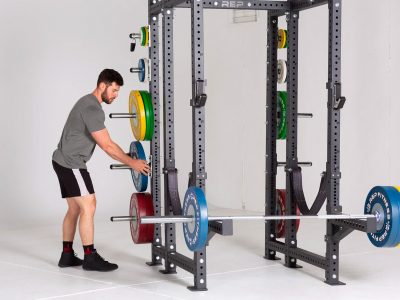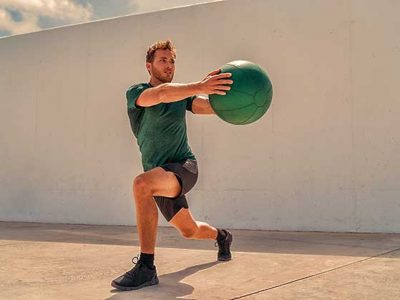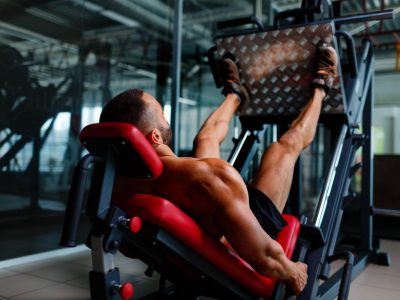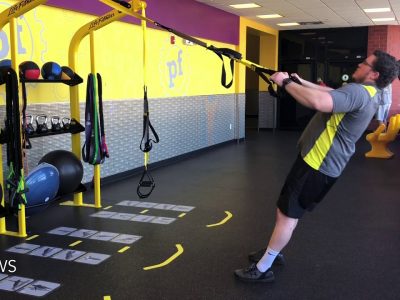Are you new to the world of strength training and find yourself constantly puzzled by “what is a barbell?”
In this blog post, we will demystify the versatile exercise tool known as the barbell by exploring its types, key components, how it’s used effectively for different exercises while prioritizing safety.
Bạn đang xem: What Is A Barbell Updated 07/2024
Stick around! This comprehensive guide might just transform your fitness journey.
Types of Barbells
Standard barbell
A standard barbell, the cornerstone of any gym or home workout space, weighs approximately 45 pounds and measures roughly seven feet long.
The simple design consists of a sturdy steel bar with room for adjustable weights on either end – perfect for tailored strengthtraining exercises.
This universal training implement can be used to target different muscle groups through various exercises such as squats, deadlifts, and bent-over rows.
Its history includes evolving from basic clubs filled with sand to today’s high-tech steel versions.
Notably designed as an essential tool for both novice weightlifters building up their foundation in strength training and bodybuilding veterans sculpting their physique, it’s versatility personifies its importance in fitness routines across the globe.
So whether you’re powerlifting or just looking to tone up your shoulder muscles, a standard barbell is always ready to offer a challenging resistance training session that meets your unique needs.
Olympic barbell
The Olympic barbell is a key component of competitive weightlifting and is specifically designed for Olympic weightlifting movements.
This type of barbell meets specific weight and dimension requirements set by the International Weightlifting Federation (IWF).
It is longer, about 7 feet in length, and typically weighs around 20 kilograms or 45 pounds.
The Olympic barbell features rotating sleeves that allow the weights to spin freely during exercises, reducing stress on the wrists and allowing for smoother lifts.
Its design allows for more dynamic movements like snatches and clean & jerks, which are essential in Olympic weightlifting competitions.
The Olympic barbell is an essential tool for serious weightlifters looking to improve their strength, power, and overall athletic performance.
Women’s barbell
A women’s barbell is specifically designed to cater to the unique needs and preferences of female weightlifters.
Xem thêm : What Is A Power Rack Updated 07/2024
It is typically lighter in weight compared to a standard barbell, weighing around 35 pounds, making it more manageable for women who may be starting their strength training journey or have specific fitness goals.
The grip diameter of a women’s barbell is also slightly smaller, ensuring a comfortable hold for smaller hands.
Just like other types of barbells, the women’s version can be used for various exercises such as squats, deadlifts, and bench press.
It provides an excellent tool for women looking to build strength, increase muscle tone, and achieve their fitness goals in the gym.
Powerlifting barbell
The powerlifting barbell is specifically designed for powerlifting movements like the bench press, squat, and deadlift.
It is heavier and sturdier than a standard barbell, allowing you to lift more weight safely.
The powerlifting barbell typically weighs around 45 pounds or 20 kilograms and has a larger diameter for better grip and stability.
With its strong construction, it can withstand heavy loads without bending or breaking.
Whether you’re training to compete in powerlifting or simply looking to increase your strength, the powerlifting barbell is an essential tool that will help you reach your goals.
Cambered barbell
The cambered barbell is a specialized type of barbell that has a unique curved shape.
This design allows for different hand placements and angles during exercises, targeting specific muscle groups in a more efficient way.
The curve of the bar creates an unstable position, forcing your muscles to work harder to stabilize the weight throughout the movement. This makes it a great tool for building core strength and stability.
The cambered barbell can be used for various exercises such as squats, bench press, and rows, adding variety to your workouts while challenging your muscles in new ways.
Key Components of a Barbell
Long bar
The long bar is a fundamental component of a barbell and serves as the main structure for weightlifting exercises.
Typically measuring around 7 feet in length, this sturdy steel rod provides stability and support during workouts.
With its evenly distributed weight, the long bar allows for proper balance and control while performing various strength-training exercises like squats, deadlifts, and bent-over rows.
Xem thêm : How To Calculate Weight On Barbell Updated 07/2024
Whether you’re aiming to build muscle or increase overall strength, the long bar is an essential tool that enables you to challenge your body and achieve your fitness goals.
Weight plates
Weight plates are an essential component of a barbell. They come in various sizes and weights, allowing you to easily adjust the resistance for your strength training exercises.
These plates are typically made of cast iron or steel and have a central hole that fits over the ends of the barbell.
The weight plates can be securely fastened using collars, ensuring that they stay in place during your workouts.
Whether you’re looking to build muscle, improve strength, or increase endurance, incorporating weight plates into your barbell exercises will help challenge your muscles and push you closer to achieving your fitness goals.
So grab those weight plates and get ready to lift!
Collars
Collars are an important component of a barbell, serving as the mechanism that keeps the weight plates securely in place.
These collars prevent any shifting or movement during exercises, ensuring safety and stability.
They come in various designs, including spring collars and clamp collars, each offering its own level of effectiveness.
The use of collars is crucial not only for preventing accidents but also for maintaining proper form and maximizing workout efficiency.
So whether you’re doing squats or deadlifts, make sure to always secure those weights with reliable collars to keep your barbell workouts safe and effective.
How to Use a Barbell
Proper grip and hand placement
Proper grip and hand placement are crucial when using a barbell to ensure safety and optimize your performance.
Here are some key points to remember:
- Gripping the bar: Hold the bar with a closed, firm grip using your palms facing down. Make sure your hands are shoulder-width apart or slightly wider, depending on the exercise you’re performing.
- Overhand or underhand grip: Most exercises require an overhand grip, where both palms are facing down. However, for certain movements like bicep curls or rows, an underhand grip with palms facing up can be used.
- Thumb placement: Wrap your thumbs around the bar alongside your fingers. This provides stability and prevents the bar from slipping out of your hands during heavy lifts.
- Hand positioning: Position your hands evenly on the barbell, ensuring that they’re aligned with your shoulders or slightly wider for optimal leverage and control.
- Proper wrist alignment: Keep your wrists straight and in a neutral position throughout the exercise. Avoid excessive bending or hyperextension of the wrists to prevent injury.
- Firm grip throughout the movement: Maintain a secure grip on the barbell throughout each repetition and avoid loosening your grip as it can lead to accidents or decreased performance.
- Adjusting hand placement: Depending on the exercise, you may need to adjust your hand placement slightly to target specific muscles or achieve proper form. Experiment with different grips and positions to find what feels most comfortable for you.
Various barbell exercises
Here are some popular barbell exercises that you can incorporate into your gym routine:
- Squats: Start with the barbell resting on your upper back, stand with feet shoulder-width apart, and squat down by bending your knees. This exercise targets your quadriceps, hamstrings, and glutes.
- Deadlifts: Place the barbell on the ground in front of you and stand with feet hip-width apart. Bend down and grab the barbell with an overhand grip, then lift it up by extending your hips and standing up straight. Deadlifts work your hamstrings, glutes, lower back, and core.
- Bench Press: Lie flat on a bench with your feet firmly planted on the ground. With a medium grip, lift the barbell off the rack and lower it to your chest before pressing it back up until your arms are fully extended. The bench press primarily targets your chest muscles (pectoralis major), shoulders (deltoids), and triceps.
- Overhead Press: Stand with feet shoulder-width apart and hold the barbell at shoulder level in front of you, palms facing forward. Press the barbell overhead until your arms are fully extended, then lower it back down to shoulder level. This exercise mainly works your shoulders (deltoids) and triceps.
- Bent-Over Rows: Stand with feet shoulder-width apart while holding the barbell in an overhand grip. Bend forward at the waist while keeping your back straight, then pull the barbell up towards your abdomen by retracting your shoulder blades. Bent-over rows target your upper back muscles (rhomboids), biceps, and rear deltoids.
- Romanian Deadlifts: Hold the barbell in front of you with an overhand grip and stand with feet hip-width apart. Keeping your back straight, hinge at the hips and lower the barbell towards the ground while maintaining a slight bend in your knees. Romanian deadlifts primarily work your hamstrings, glutes, and lower back.
- Lunges: Hold the barbell on your upper back with an overhand grip and stand with feet hip-width apart. Take a step forward with one leg, then lower your body by bending both knees until your front thigh is parallel to the ground. Push through your front heel to return to the starting position. Lunges target your quadriceps, hamstrings, glutes, and calves.
- Barbell Curls: Stand with feet shoulder-width apart and hold the barbell in an underhand grip, arms fully extended in front of you. Bend at the elbows to curl the barbell up towards your shoulders, then slowly lower it back down. Barbell curls mainly work your biceps.
Safety precautions
- Always warm up properly before using a barbell to prevent injury.
- Use proper form and technique when performing exercises with a barbell to avoid strain or muscle imbalances.
- Start with lighter weights and gradually increase the load as you build strength and confidence.
- Use collars to secure the weight plates on the barbell, ensuring they don’t slide off during your workout.
- Pay attention to your body’s signals and listen to any pain or discomfort. Stop immediately if something doesn’t feel right.
- Have a spotter nearby when attempting heavy lifts, especially if you’re lifting alone.
- Check the condition of the barbell regularly for any signs of wear or damage that may compromise its safety.
- Maintain a clear and safe workout area, free from obstruction and clutter, to avoid accidents while using the barbell.
- Always use proper footwear with good traction to prevent slipping or losing balance during exercises.
- Stay hydrated during your workout session and take regular breaks to prevent exhaustion or dehydration.
Conclusion
In conclusion, a barbell is not just an ordinary piece of exercise equipment. It serves as the foundation for true strength training and is essential for any serious weightlifter.
Whether you’re into weightlifting, powerlifting, or bodybuilding, incorporating barbell exercises into your workout routine will help you build strength and achieve impressive results.
So grab hold of that steel rod and start lifting your way to a stronger physique!
Nguồn: https://usgyms.net
Danh mục: Gym Equipment










